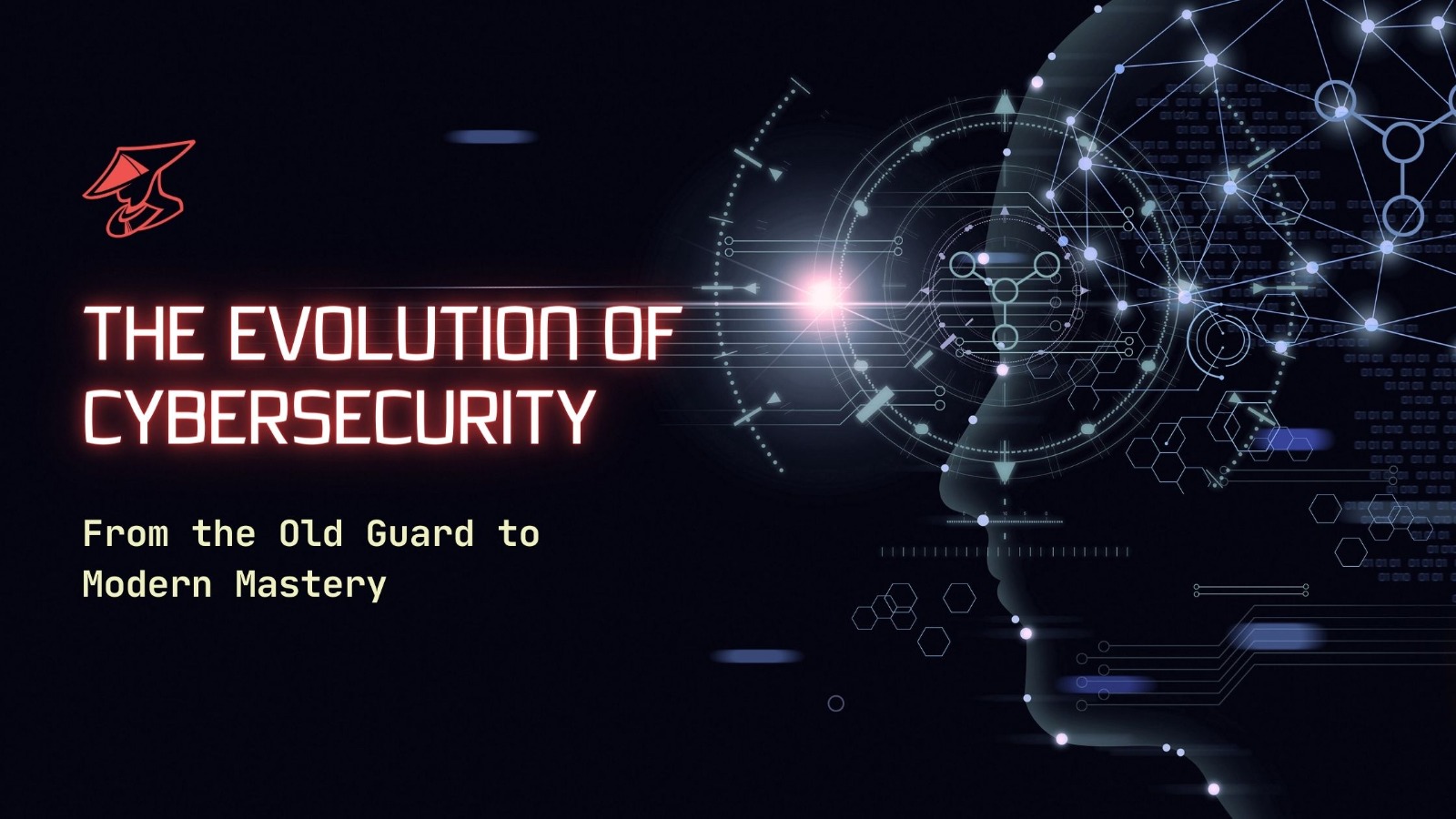Cybersecurity Evolution: From the Old Guard to Modern Mastery
by Ben Brown | 01/12/2024

by Ben Brown | 01/12/2024

As the digital landscape continues to evolve at breakneck speeds, so too do the threats that businesses face. The methods and tools once used to ensure cybersecurity, while pioneering in their day, can't entirely cater to the sophisticated and complex challenges of today's interconnected world. But how have cybersecurity testing methods evolved, and why was there an imperative to modernise? Let's delve into this transformation.
In the early days of cybersecurity, much of the testing was done manually. Ethical hackers, or 'pen testers', would attempt to find and exploit vulnerabilities in systems by mimicking potential attacks. This hands-on approach provided valuable insights but was time-consuming and limited by individual expertise.
Legacy security solutions often relied on signature-based detection. This method identifies malware based on already known patterns or 'signatures'. While effective against previously identified threats, it struggled against new, unknown ones.
Traditionally, cybersecurity operated on a reactive basis. The primary focus was on remediation after a security incident rather than proactive prevention. This 'put out the fire' approach was not efficient given the increasing frequency and severity of attacks.
While manual testing still holds value, automated tools can simulate thousands of potential attack scenarios in a fraction of the time. These tools continuously evolve, adapting to new threats and offering comprehensive coverage.
Modern solutions have shifted from signature-based models to behavioural analysis. Instead of merely looking for known malware signatures, these tools monitor system behaviours to detect suspicious activities, even from previously unseen threats.
Rather than waiting for a breach to react, the modern approach focuses on continuous monitoring and threat anticipation. By constantly scanning and analysing system activities, security teams can detect and counteract threats in real-time.
With businesses increasingly relying on cloud infrastructure, modern cybersecurity testing harnesses cloud capabilities for scalability and flexibility. Additionally, the integration of Artificial Intelligence enables faster threat detection, prediction, and response.
Today's digital ecosystems are vast and interconnected. With the rise of IoT (Internet of Things) devices, mobile solutions, and cloud infrastructures, the potential attack surface has grown exponentially.
Cyber adversaries are more skilled than ever. Armed with advanced tools and techniques, they continually evolve their strategies, often outpacing traditional security measures.
The legal and regulatory requirements around data protection have tightened. Modern businesses need to ensure they're compliant, or they risk substantial financial and reputational damages.
In today's digital age, a single significant breach can lead to considerable financial losses, erode customer trust, and even spell the end for a business. The stakes are higher than ever, necessitating advanced, proactive security measures.
The transformation from old to new methods in cybersecurity testing is not just about keeping up with technological advances. It's about ensuring that businesses, regardless of size or industry, can thrive in an era where digital threats are not just possible but probable. By understanding where we've come from and the direction in which we're headed, organisations can better appreciate the value of modern cybersecurity testing and equip themselves for the challenges of tomorrow.
Embracing modern techniques and tools doesn't mean discarding the wisdom of the past. Instead, it's about integrating the foundational principles of cybersecurity with the innovative solutions of today, ensuring comprehensive protection in an ever-changing digital world.
Start scanning your projects for free. You will get a free breakdown of your security status. Start securing your future now.
Get started